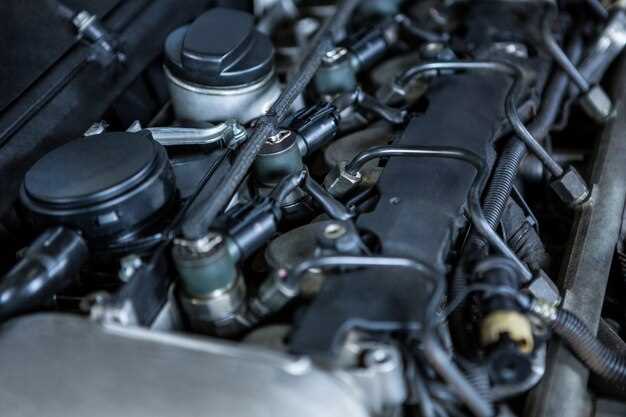
In the world of motorsports, the relentless pursuit of speed and performance comes with its own set of challenges. One of the most critical factors that can dictate a race car’s success is its ability to manage overheating. As engines generate immense power, they also produce considerable heat, necessitating advanced cooling systems to maintain optimal operating temperatures. Without effective cooling solutions, even the most powerful engines risk catastrophic failure.
The importance of cooling systems becomes particularly apparent when considering how races often push vehicles to their limits. High-performance race cars are engineered for peak performance, and managing thermal dynamics is essential to ensure reliability and efficiency on the track. A well-designed cooling system not only prevents overheating, but also enhances engine longevity and overall vehicle stability under extreme conditions.
The evolution of cooling technologies in racing has seen the integration of innovative materials and engineering techniques, resulting in systems that are as sophisticated as the engines they serve. Understanding these systems is crucial for both enthusiasts and professionals alike, as they play a pivotal role in the competitive landscape of high-performance racing. In this article, we will delve into the various types of cooling systems used in race cars, their functionality, and their vital role in preventing overheating during high-stakes competitions.
Understanding Overheating Issues in Race Cars

Overheating is a critical issue faced by high-performance race cars, significantly affecting their performance, reliability, and overall success on the track. The primary function of the cooling system is to dissipate heat generated by the engine during operation. If this system fails to maintain optimal temperatures, it can lead to severe engine damage and a decrease in horsepower.
One of the key components in preventing overheating is the radiator. It works by allowing coolant, which absorbs heat from the engine, to flow through it and release that heat into the atmosphere. The efficiency of the radiator is crucial; a poorly designed or clogged radiator can hinder coolant flow, resulting in elevated engine temperatures.
Factors contributing to overheating include insufficient airflow through the radiator, a malfunctioning thermostat, or a low coolant level. During high-speed racing, aerodynamic features can also impact airflow, sometimes limitative to optimal radiator performance. Additionally, the choice of coolant type and the radiator’s capacity can influence the overall heat exchange efficiency.
Maintaining the cooling system is essential for preventing overheating. Regular checks for leaks, ensuring proper coolant levels, and cleaning the radiator fins to maximize airflow are vital maintenance tasks. Understanding the dynamics of heat generation and dissipation within the engine and cooling system is fundamental for race teams aiming for peak performance and durability.
Choosing the Right Radiator for Maximum Heat Dissipation
Selecting the appropriate radiator is crucial for ensuring optimal performance in high-performance race cars. An efficient radiator prevents overheating, which can lead to engine failure and reduced race performance. Here are key factors to consider when choosing a radiator:
- Size: The size of the radiator directly impacts its cooling capacity. A larger radiator generally has a greater surface area for heat exchange, while a smaller one may struggle to dissipate heat effectively.
- Material: Common materials include aluminum and copper. Aluminum radiators are lighter and provide excellent heat dissipation, while copper units may offer better thermal conductivity but weigh more.
- Core Design: The design of the radiator core influences airflow and cooling efficiency. Options include single-core, dual-core, or multi-core designs. A multi-core radiator typically provides superior cooling performance.
- Fin Density: The density of the fins affects airflow through the radiator. Higher fin density increases surface area but can restrict airflow, so a balance must be found.
- Fluid Capacity: More coolant capacity can help regulate temperature during intense racing conditions. Adequate fluid levels prevent overheating, especially during prolonged high-performance driving.
Additionally, consider the following factors:
- Compatibility: Ensure the radiator fits correctly within the vehicle’s existing layout, including mounting points and hose connections.
- Cooling Fans: Pairing the radiator with effective cooling fans enhances air circulation, further improving heat dissipation.
- Brand and Reviews: Research reputable brands and read user reviews to ensure the radiator’s reliability in high-stress environments.
By carefully assessing these elements, race teams can select a radiator that enhances cooling efficiency and minimizes the risk of overheating, ultimately improving overall race performance.
Common Cooling System Upgrades for Enhanced Performance

Improving the cooling system in high-performance race cars is crucial to prevent overheating and ensure optimal engine performance. One common upgrade is the installation of an aluminum radiator. These radiators offer superior heat dissipation compared to stock components, leading to lower operating temperatures during intense race conditions.
Another effective upgrade involves the use of high-performance electric fans. These fans are more efficient than traditional mechanical fans, providing better airflow and reducing the load on the engine. This results in improved cooling and responsiveness, particularly during high-speed racing scenarios.
Additionally, aftermarket coolant hoses made from high-quality materials can enhance the cooling efficiency. These hoses are often more durable and resistant to heat, preventing leaks and ensuring consistent coolant flow throughout the system.
Upgrading to a larger intercooler is also a popular choice, especially for turbocharged engines. A larger intercooler reduces intake temperatures, thereby increasing engine power and decreasing the risk of overheating during prolonged track sessions.
Finally, using a high-performance coolant can significantly improve the heat transfer properties of the cooling system. These specialized coolants are designed to withstand higher temperatures and provide better protection against corrosion, ensuring reliability and efficiency during races.












